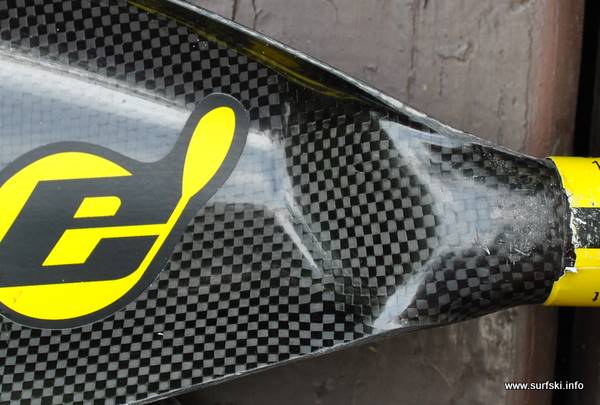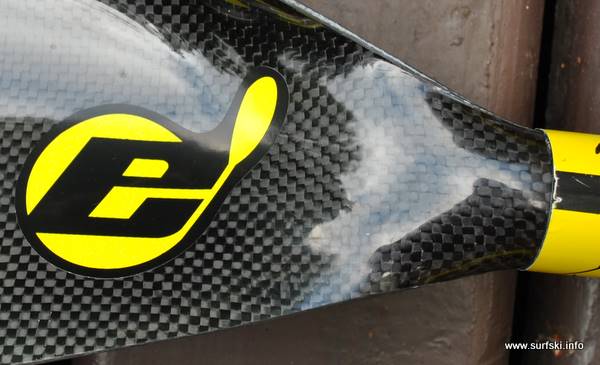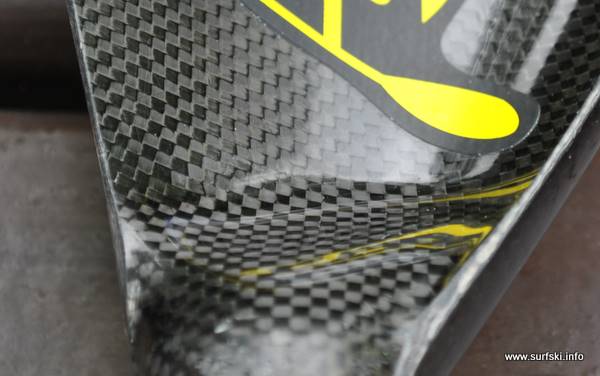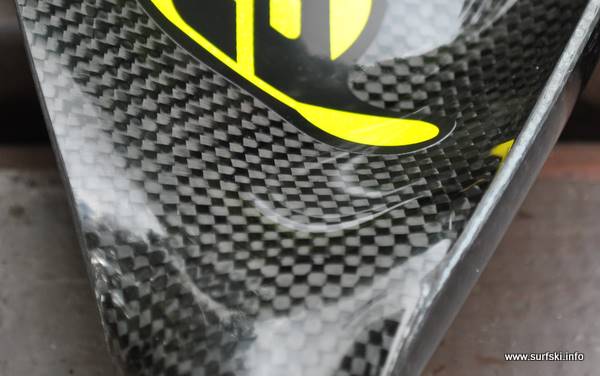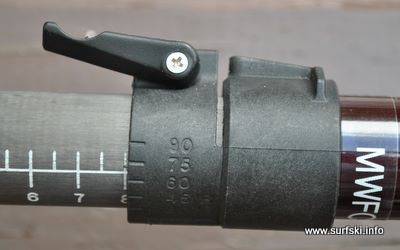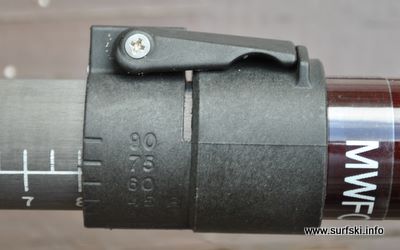Surfski.info Review – Epic Mid-Wing Paddle
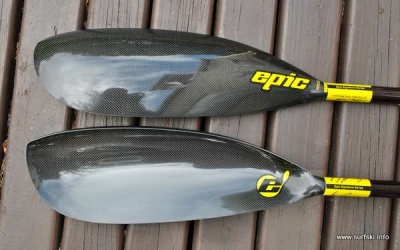 Epic mid-wing paddle
Credits: www.surfski.info
Epic mid-wing paddle
Credits: www.surfski.info
I was lucky enough to get my hands on the upgraded Epic Mid-Wing Paddles recently. The new model has strengthened blades and a lever length-lock.
First Looks
Weight
These paddles are very light – mine weighs in at around 680g (24oz).
Finish
The paddles are works of art – the finish is exquisite.
Works of art!
Strengthened Blades
The new model retains the same blade shape – but has been beefed up considerably in the vulnerable area close to the shaft, as can be seen in the photos.
Old blade
The new, strengthened blade
Old blade
New strengthened blade
Lever length-lock
The length-lock has also been optimized. It’s extremely easy and convenient to use!
Lever Length-lock - unlocked
Lever Length-lock - locked
Using the Paddles
I find the paddles offer:
- Comfort: the oval shaft helps locate the correct angle for the controlling hand (right hand in my case)
- Easy to set up – and with the lever-lock it just got a whole lot easier.
- A firm “grip” on the water at the catch
- Great balance: no tendency to skid or twist as you pull through
Tennis grip
Some paddlers put surfing wax onto the shaft to help prevent hands slipping (which can be upsetting in more ways than one…)
I recently put a tennis racquet grip onto my paddle and find it works well.
Tennis grip
Whether you use wax or some other grip (my buddy Dale uses a grip off a cricket bat!), your hand will take some time to get used to it and you can expect blisters until it does.
Care of the paddles
I always rinse my paddles, filling the shafts with fresh water and thoroughly cleaning the length lock. This was especially important with the old conventional length lock. And over time sand/salt can rub and damage the surfaces at the interface of the inner and outer shafts.
Paddle leash
When paddling offshore I use both a body leash and a paddle leash. The body leash is coiled plastic and attaches to a belt attached to my PFD with a quick-release clip. The paddle leash is a light rope.
In my opinion the highest priority by far should be a body/leg leash. For lots of reasons, you don’t want to lose your boat.
You’re unlikely to lose your paddle – even if you come off your ski and drop it, the paddle will just sit in the water – it doesn’t get blown downwind like the ski.
So why use a paddle leash?
One answer is that it means you CAN let it go and not worry about it. This can be very helpful when you’re alongside your buddy who’s just broken a rudder cable and you need both hands to try to effect a repair. Been there, done that, the paddle leash was very useful! Have I ever tangled the two leashes? No.
(As always – you don’t want to be attached to the ski when you’re going through big surf near the beach. You’ll be injured if a big wave takes the ski. You need the body leash when you’re offshore.)
Single or Split Shaft?
(“Split shaft” describes a paddle like this one that breaks down into two pieces. “Single shaft” paddles are just that – they have a one-piece shaft.)
Some paddlers prefer to use single shaft paddles, saying that they feel more confident in the strength of single shafts.
But there’s no denying the convenience of split shaft paddles – particularly when it comes to travelling. Many paddlers also like to change the length of the shaft; shortening the paddle is like changing to a lower gear – making it less tiring to pull into wind, for example.
Models
The paddle blades come in two layups: hybrid (white) blades that are less expensive, and the full carbon blades.
Epic offer three alternative paddle shafts that have different flexibility characteristics:
- The hybrid/green shaft (most flexible) is preferred for surf competitions or anyplace where the shaft may experience impact (with another boat, paddle, even the ground or a car door)
- The burgundy shaft (medium flexibility) is most popular
- The blue shaft (stiffest) is preferred for sprint racing, but not used much by ski paddlers.
Check the Epic website for more details.



